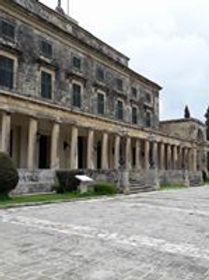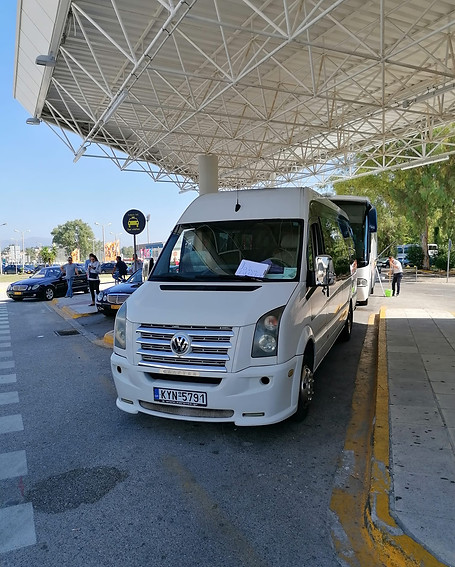
Prompt & Reliable
corfu minibus low Cost trips & taxi service , can get you from point A to B with comfort and with ease. We are proud to be the leading Airport Transfer and taxi Service in the Corfu area. We believe we’ve become so successful due to us always working hard to go the extra mile: we’ll work whenever our clients need us, offering worry-free, quality service at a great price. Contact us today and get where you need to go.
-
Sidari is a settlement at the western end of the northern coast of Corfu, 32 km from the capital. According to the 2011 census, Sidari has 386 inhabitants. The coastline consists of impressive silvery hills that penetrate into the sea creating coves. The most famous and impressive formation is called Canal d'Amour ("Channel of Love"), between Sidari and Peroulades. Also in the area there are many underwater caves. Sidari today is an important tourist destination of Corfu, with hotels, rooms to let and restaurants. It has three beaches. From Sidari there is a ferry connection during the summer months with Erikoussa, Othonoi and Mathraki
-
In Sidari traces of a prehistoric settlement have been discovered, which is the only place of the Mesolithic period that has been investigated in the Ionian islands. The findings in the settlement date from 7770 ±340 years ago, until the Bronze Age]. Shells and unpainted, decorated bottles dating back to the 6th millennium BC have been found]

Roda is 38.5 km away. NW. from corfu town and is located between Acharavi (A.) and Sidari (W.). As a settlement it is officially mentioned in 1981 to be inventoried in the then community of Karousades[. According to the plan Kallikratis and after its amendment in 2019, together with Agios Ioannis, Astrakeri and Karousades, they constitute the municipal community of Karousades, which belongs to the municipal unit of Esperion in the municipality of North Corfu] and according to the 2011 census it has a population of 89 inhabitants].
The area was inhabited in antiquity, as evidenced by several building remains. The remains of a Doric temple of classical times, west of the modern settlement, are the most important finding of the site. In 1939 the Archaeological Society excavated a Doric pavilion temple (6 x 11) and brought to light the crepidoma as well as parts of its roof, e.g. cornices with written decoration, clay anthems and marble capes. The temple dates back to the 5th century BC. In the year 1930, the then Ephor of Antiquities, Ioannis Papadimitriou, located columns of the church in the area that bore the name "Agios Georgios of the pillars", from where other spolia came from that were used in modern buildings of the settlement of Roda. In 1939, the Archaeological Society, headed again by Papadimitriou, carried out the first excavation at the site during which the crepidoma, the walls and important parts of the superstructure of the church came to light. In 1967, in excavations of the Archaeological Service under the Superintendent Georgios Dontas, the rectangular altar east of the church was also found.
Many of the findings of the excavations are exhibited in the Archaeological Museum of Corfu.


Saint George Ice in Corfu is a charming destination that offers a perfect blend of relaxation and adventure. Nestled along the stunning coastline, it features pristine beaches and crystal-clear waters, ideal for swimming and sunbathing. can indulge in various water sports or enjoy leisurely strolls through the picturesque surroundings. With a vibrant atmosphere and local dining options, Saint George Ice is a must-visit spot for both families and solo travelers alike.
book with us
Explore our range of affordable taxi services for all your transportation needs. From quick trips to airport transfers, we offer reliable and comfortable rides. Our taxi service-prices are competitive, ensuring you get the best value for your money.

Trips & Tours
Embark on unforgettable journeys with our low-cost minibus trips. Discover the beauty of Corfu with our expert guides leading the way. Whether you're a solo traveler or in a group, our trips cater to all, promising a memorable experience.

Special Events
Make your special occasions even more memorable with our services. From weddings to corporate events, our team ensures seamless transportation for you and your guests. Sit back, relax, and enjoy the ride while we take care of the rest.

Customer Care
At Corfu Minibus Low Cost Trips & Taxi Services, customer satisfaction is our top priority. Our dedicated team is available 24/7 to assist you with any queries or bookings. Experience exceptional service from the moment you contact us.

Affordable Trips
Explore Corfu with our low-cost minibus trips and reliable taxi services. Enjoy comfortable rides with professional drivers at budget-friendly prices.
taxi prices from airport to North Corfu
Sidari-65 euros plus taxis
Roda-60 euros plus taxis
Acharavi-60 euros plus taxis
Almyros-65 euros plus taxis
kassiopi-70 euros plus taxis
taxis are 13%











